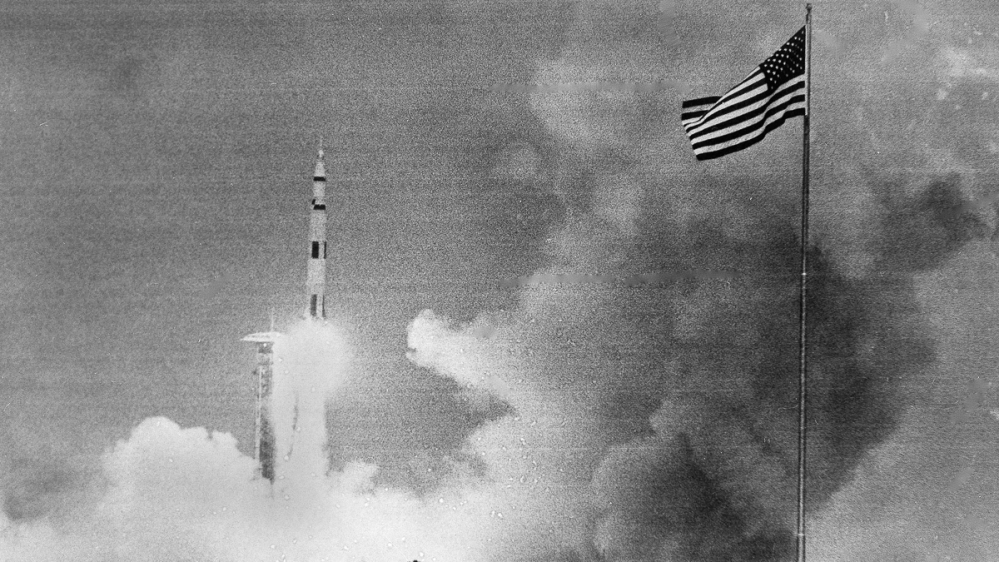Astronauts Jim Lovell, Fred Haise and Jack Swigert boarded the Saturn V rocket on April 11, 1970. They were the crew for the Apollo 13 mission to the moon.
Lovell served as the commander of Apollo 13, Haise the lunar lander pilot and Swigert, a last-minute replacement for another astronaut who had been exposed to German measles, the command module pilot. Lovell and Haise would have been the fifth and sixth men to walk on the moon.
But on April 13, disaster struck.
The astronauts had almost reached the moon when they heard a bang and felt a shudder. One of two oxygen tanks in the service module had ruptured. Within seconds, Houston’s Mission Control saw pressure readings for oxygen tank B plunge to zero.
From that point onwards, the mission was no longer to land on the moon but to make it back to Earth alive. The astronauts were 322,000 kilometres (200,000 miles)from Earth when the explosion happened.
On the ground, flight controllers went into crisis mode, racing to come up with a rescue plan. They immediately ordered the command module Odyssey shut down to conserve what little power remained, and the astronauts into the lunar module Aquarius, now a lifeboat.
Aquarius was designed for two astronauts for two days – all three crew members would need to spend four days inside the module.
The carbon dioxide overload, from breathing, threatened to kill them.
Engineers scrambled to figure out how to convert the square air-purifying canisters in the dead command module into round ones that would fit in the lunar module.
Their outside-the-box, seat-of-the-pants solution, using spacecraft scraps, worked. But it was so damp and cold in the lunar module that the astronauts could not sleep. Condensation covered the walls and windows, and the temperature was close to freezing.
Dehydrated and feverish, Haise had the roughest time during the six-day ordeal, contracting a urinary tract infection.
On April 17, the astronauts managed to power up their condensation-soaked command module, and the spacecraft decelerated into the atmosphere.
Communications were down as the astronauts made their daring re-entry. But finally, three billowing parachutes appeared above the Pacific.
The three men made it safely back to Earth as the world watched what had become a gripping real-life drama.
The tank explosion later was linked to damage caused by electrical overheating in ground tests.



